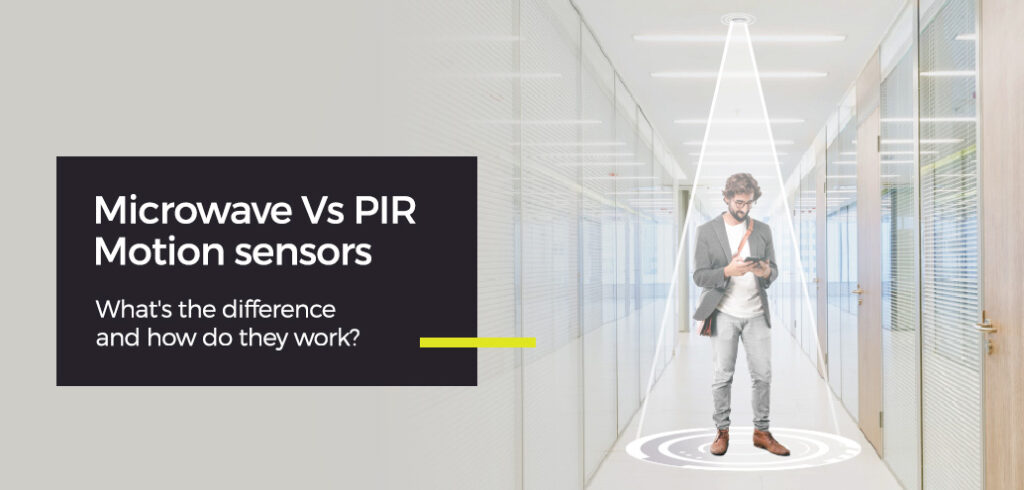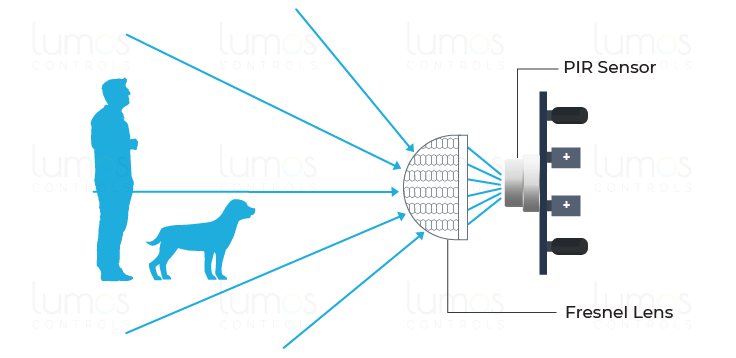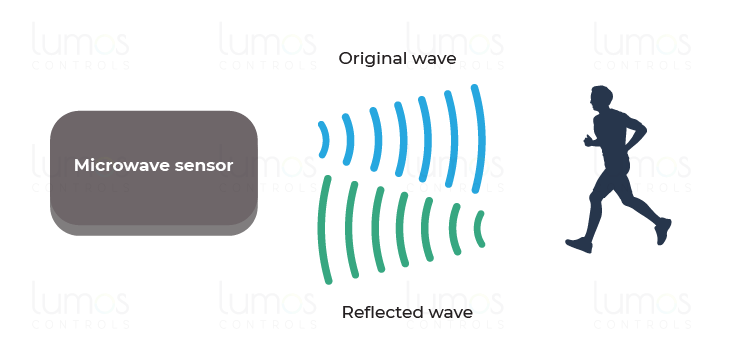Microwave Vs PIR Motion sensors – What’s the difference and how do they work?

| A motion sensor is a device used for identifying moving items especially human beings. It is used to control lighting as well as automate the operations related to other connected devices. Passive Infrared sensors and microwave sensors are the two commonly used types of motion sensors for occupancy and intrusion detection. |
Introduction
Due to the rising concern regarding safety security and efficiency, motion sensors have been gaining momentum over the years. It is a widely installed device to control individual fixtures or network systems for interior illuminations and security in residential spaces, commercial building industrial facilities, and exterior illuminations in areas like parking, walkways, pathways, and driveways.
Before going any further, we must understand what a motion sensor is and its application in the real-time world.
What is a motion sensor?
A motion sensor is defined as an electronic device designed to capture the movements of an object of interest within a specified parameter and convert them to electrical signals to automate the operations of other connected devices.
Nowadays, many popular IoT applications found in commercial buildings are incorporated with motion sensors. From security systems to lighting, motion sensors are regarded as an effective method for energy-saving and data gathering. The most frequently used motion sensors in IoT applications are Passive Infrared (PIR) and Microwave sensors.
Motion sensors are required in any well-designed commercial space and to know why they are a must! Check out this blog!
What is a PIR motion sensor?
A Passive Infrared sensor (PIR), is an electronic device capable of measuring infrared light radiated from objects within its line of sight. It is used in motion detectors to sense the movements of people, animals, or other objects. They are commonly used in burglar alarms or automatically-activated lighting systems.
How it works?
A pyroelectric sensor is the main component of a motion sensor. Humans and animals emit heat energy in the form of infrared radiation. A PIR motion sensor has a pair of pyroelectric sensors to detect heat energy from the surrounding environment. It helps generate an electrical signal when they are heated or cooled.
In a PIR motion sensor device, both the sensors are placed beside each other. The sensor module also consists of a specifically designed cover called Fresnel lens that helps focus the infrared signals onto the pyroelectric sensor.

When Unoccupied
When a space is unoccupied, the pyroelectric sensor does not detect any change in temperature and would remain idle.
When Occupied
When the human or animal body gets into the sensors range, the infrared signal difference between these two pyroelectric sensors will trigger the lights to turn on.

Benefits of PIR motion Sensor
- Detects motions accurately at any time of the day or at night
- Consumes a very less amount of energy between 0.8 W to 1.0 W
- They are best suited for electrical applications that are used in smaller or compact premises
PIR Lighting Applications
PIR motion sensors are known for making lighting more cost-effective and an excellent energy-saving solution. They do it by eliminating electricity wastage that happens when individuals forget to switch OFF lights manually.
In lighting applications, it offers the best results when used in compact and smaller spaces. Here are the best use-cases for commercial buildings.

What is a Microwave Motion sensor?
A microwave motion sensor is a device that uses electromagnetic radiation for occupancy or movement detection.

How it works
These sensors emit electromagnetic waves with the help of a transmitter that is then reflected back to the sensor, known as the echo time. The receiver in the sensor then analyses the waves that are bounced back.
What is an Echo Time?
An echo time is the time taken for the signal to be reflected back to the sensor.
There are 2 types of waves analyzed by the sensor.
Normal Wave
If there are no moving objects in the pathway of the wave, the waves reflected back to the sensor will be normal.
Altered Wave
But if the sensor detects a moving object in the room, the waves reflected are going to be altered.
The disrupted wave will change the echo time, thereby triggering the lights/security systems connected to the sensor.

Benefits of Microwave motion sensor
- Highly Sensitive
- Wide range detection
- Improved accuracy
- Can detect through glass plastic, think walls
- A perfect option for security lights
Microwave motion sensors Lighting Applications
Microwave motion sensors do have a consistent capability of detecting movements in all temperatures. They provide the perfect lighting conditions in any extreme environment and help occupants with the perfect moment along with improved safety.
The following are the best use cases for microwave sensors in commercial spaces.

Difference between PIR vs Microwave motion sensor

Conclusion
Motion sensors are an ideal choice for commercial spaces that enhances security and safety. These sensors promote energy savings by switching ON/OFF lights when and where needed. They are also effortless to install, whether a retrofit or new constructions, making them more convenient for lighting contractors or designers.
Read more about Cyrus C dimming sensor with 0-10V control here.
To know more about PIR or Microwave sensors, designing, or installation, feel free to reach us